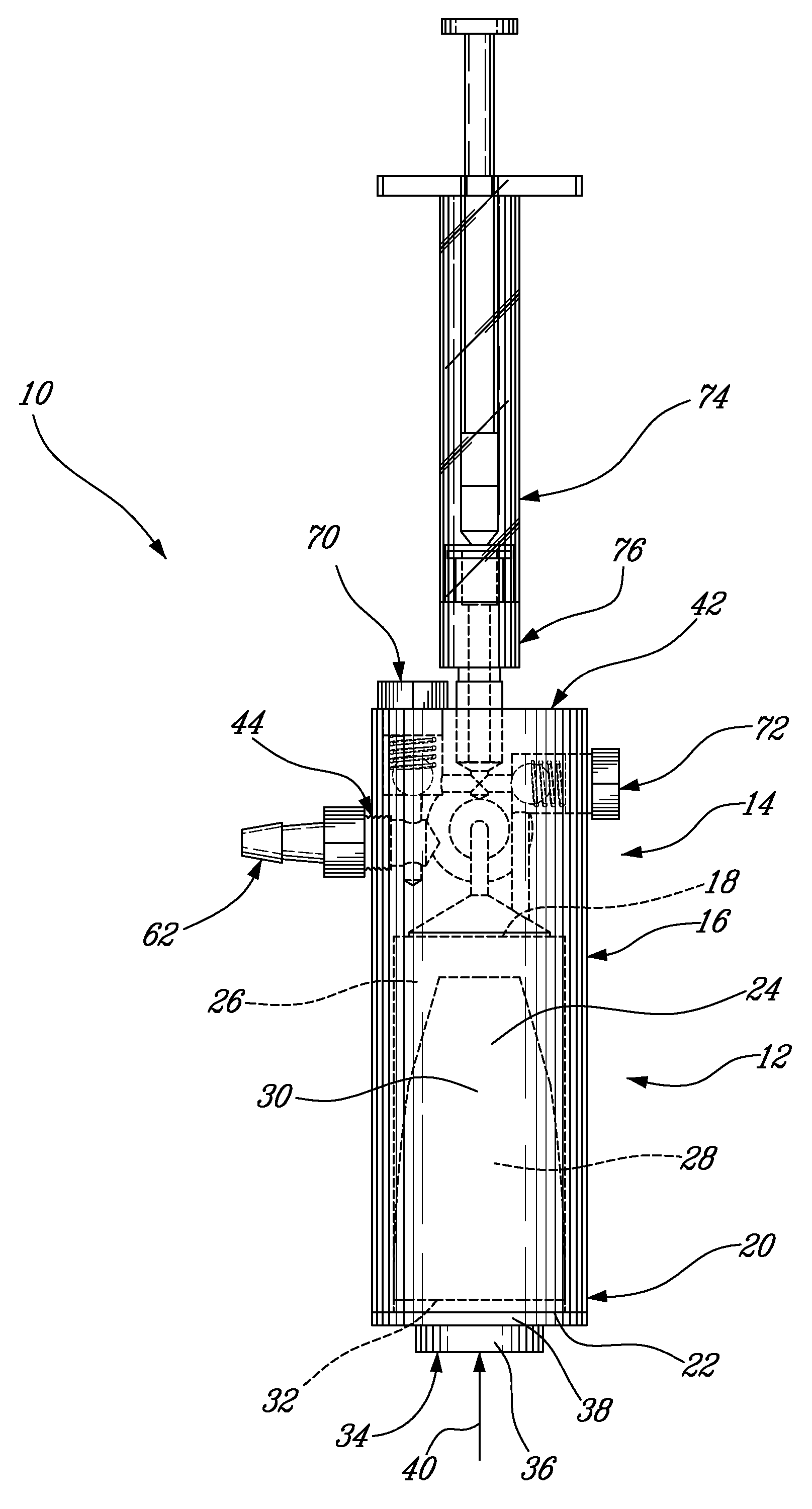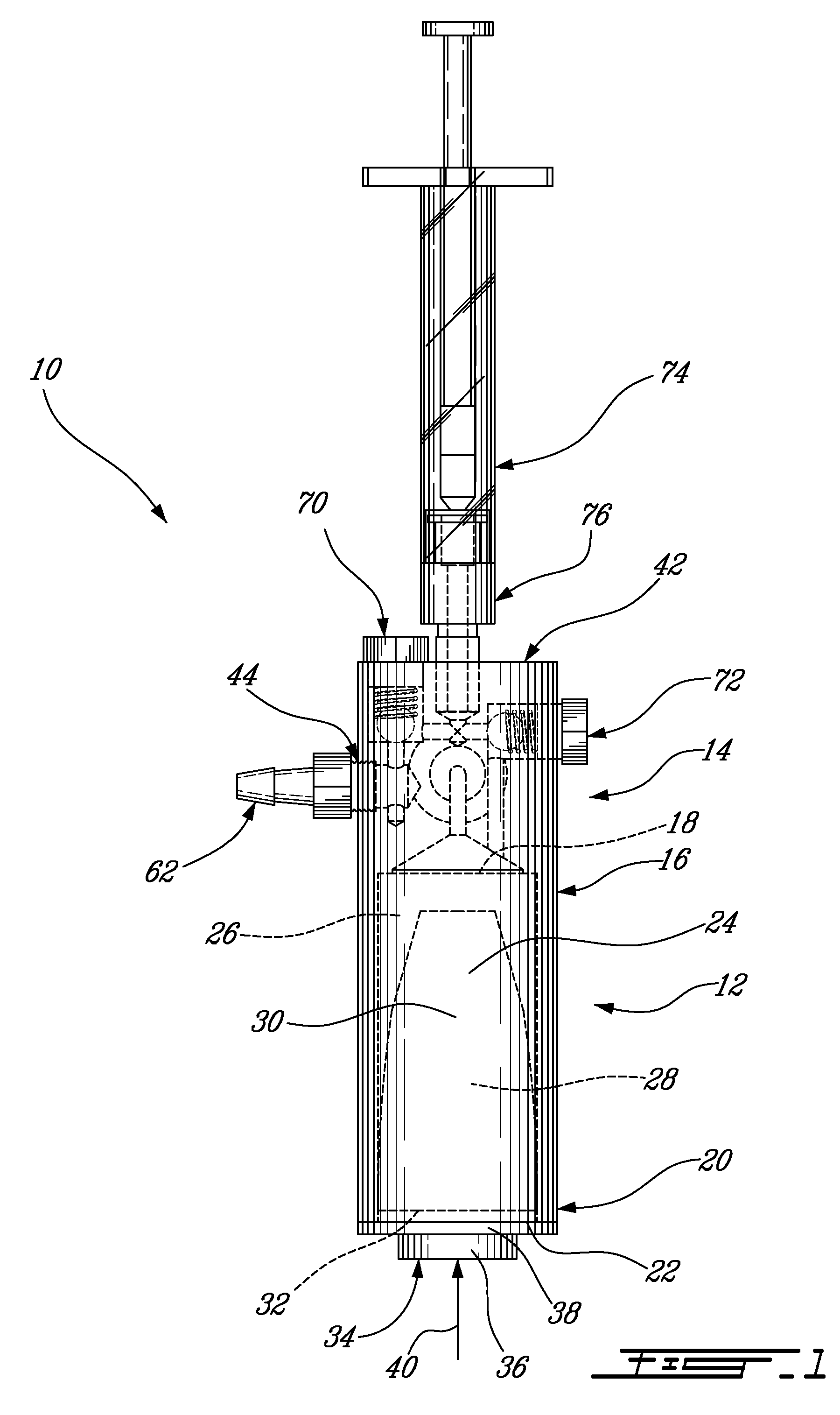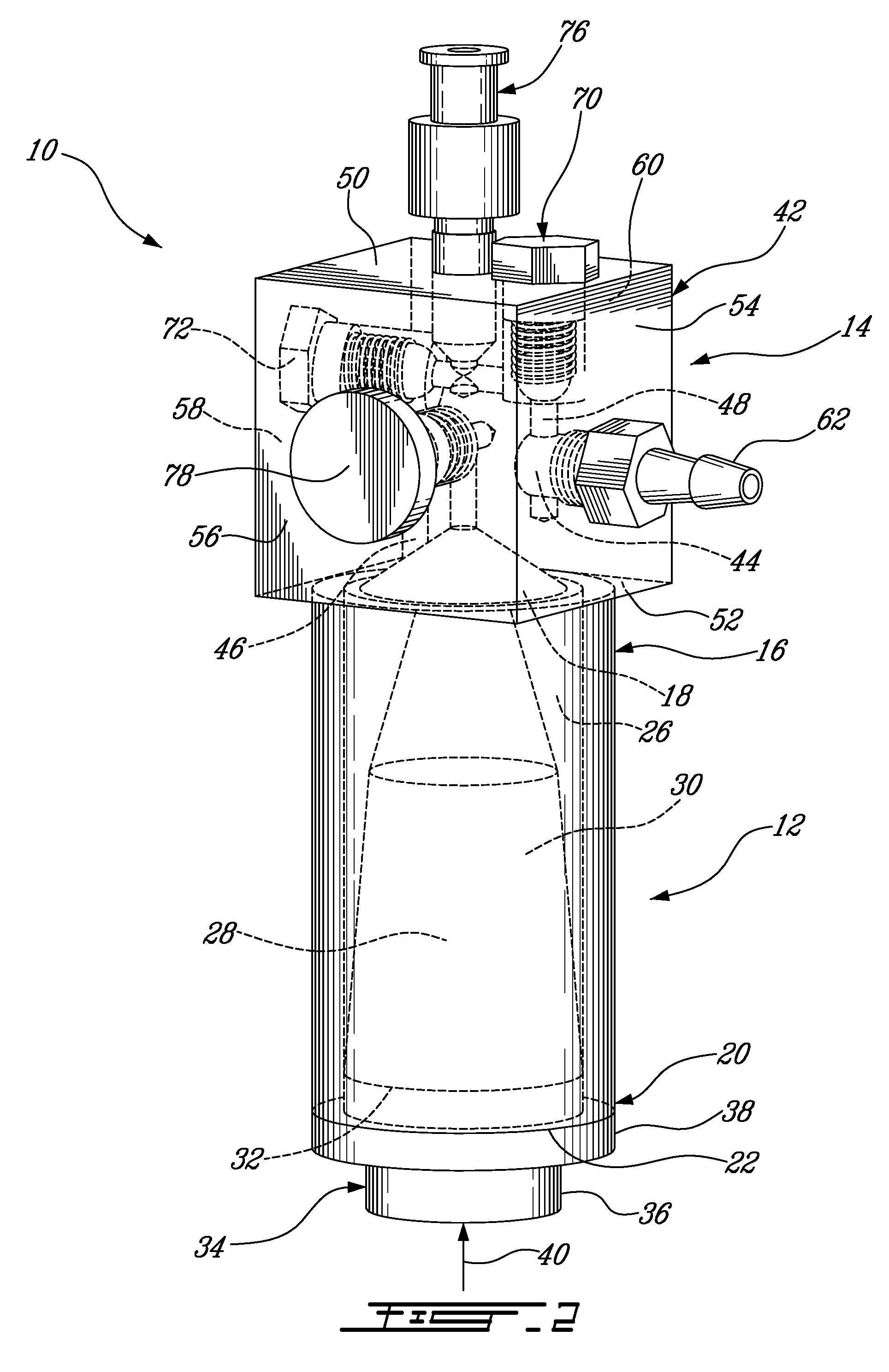Device for injecting high viscosity material
a high-viscosity material and material technology, applied in the field of injection biomechanics, can solve the problems of reducing the pain experienced by patients, increasing the risk of so-called fragility fractures, and losing density and strength of the trabecular bone, and achieving the effects of high viscosity, high viscosity, and high viscosity
- Summary
- Abstract
- Description
- Claims
- Application Information
AI Technical Summary
Benefits of technology
Problems solved by technology
Method used
Image
Examples
second embodiment
[0051]FIG. 6 illustrates a second embodiment where the container 12 and the pressure applicator 14 may be connected with an extension line provided as a small inner diameter tube 41 of low compliance that is less than 1 mm in diameter, with thick walls. This embodiment allows the pressure applicator to be removed from the radiation field while maintaining the tactile feedback of the device. The container 12, containing the viscous cement, remains at the closest possible distance from the injection site. As compliance (i.e. of the extension line 41) becomes a greater concern with this embodiment, it is important to have the smallest possible inner diameter for the tube 41 so that the surface tension acting on the tube for any given pressure within the tube is minimal and so that the wall thickness in relation to the tube's inner diameter can be sufficiently larger to minimize compliance.
[0052]As best seen in FIGS. 2 and 3, the pressure applicator 14 comprises a housing 42 having a fl...
fifth embodiment
[0067]FIG. 9 illustrates the device 10. Similar reference numerals have been employed to identify like features. In this embodiment the material-moving member is provided as a flexible double membrane identified as 30a and 30b. It can be seen that the flexible membrane 30a is attached to the pressure applicator 14 thereby defining the first cavity 26 adapted to receive the incompressible fluid therein. The flexible membrane 30b is attached proximal to, or at the inlet 18 of, the container 12, thereby defining the second cavity 28 adapted to receive the viscous material in the container 12.
[0068]In operation, the pumping of the power piston 74 (not shown in FIG. 9) will build up a volume of incompressible fluid in the first cavity 26 that will cause the flexible membrane 30a to expand. As the flexible membrane 30a expands, it will push against the flexible membrane 30b thereby causing the latter to apply a pressure against the viscous material in the second cavity 28. Thus, the more ...
eighth embodiment
[0073]FIG. 13 illustrates the device 10, which comprises a temperature control system 108. In this embodiment the container 12 includes inlet and outlet ports 110, 112 as part of the temperature control system 108 for heating or cooling the incompressible fluid. For example, a closed loop fluid circulation system can be used to circulate heated or cooled incompressible fluid in the container without affecting the pressure therein. A radiator or cooling jacket (not shown) can be part of the temperature control system 108 for heating or cooling the circulating fluid. The material-moving member 24 is capable of heat transfer such that the temperature of the viscous material in the container 12 can be controlled. In another example, the container 12 may be provided with a cooling or heating jacket built in the walls thereof. Generally, the temperature control system 108 allows a surgeon to achieve a better control of the viscous material. For example, cooling the viscous bone cement all...
PUM
 Login to View More
Login to View More Abstract
Description
Claims
Application Information
 Login to View More
Login to View More - R&D
- Intellectual Property
- Life Sciences
- Materials
- Tech Scout
- Unparalleled Data Quality
- Higher Quality Content
- 60% Fewer Hallucinations
Browse by: Latest US Patents, China's latest patents, Technical Efficacy Thesaurus, Application Domain, Technology Topic, Popular Technical Reports.
© 2025 PatSnap. All rights reserved.Legal|Privacy policy|Modern Slavery Act Transparency Statement|Sitemap|About US| Contact US: help@patsnap.com



